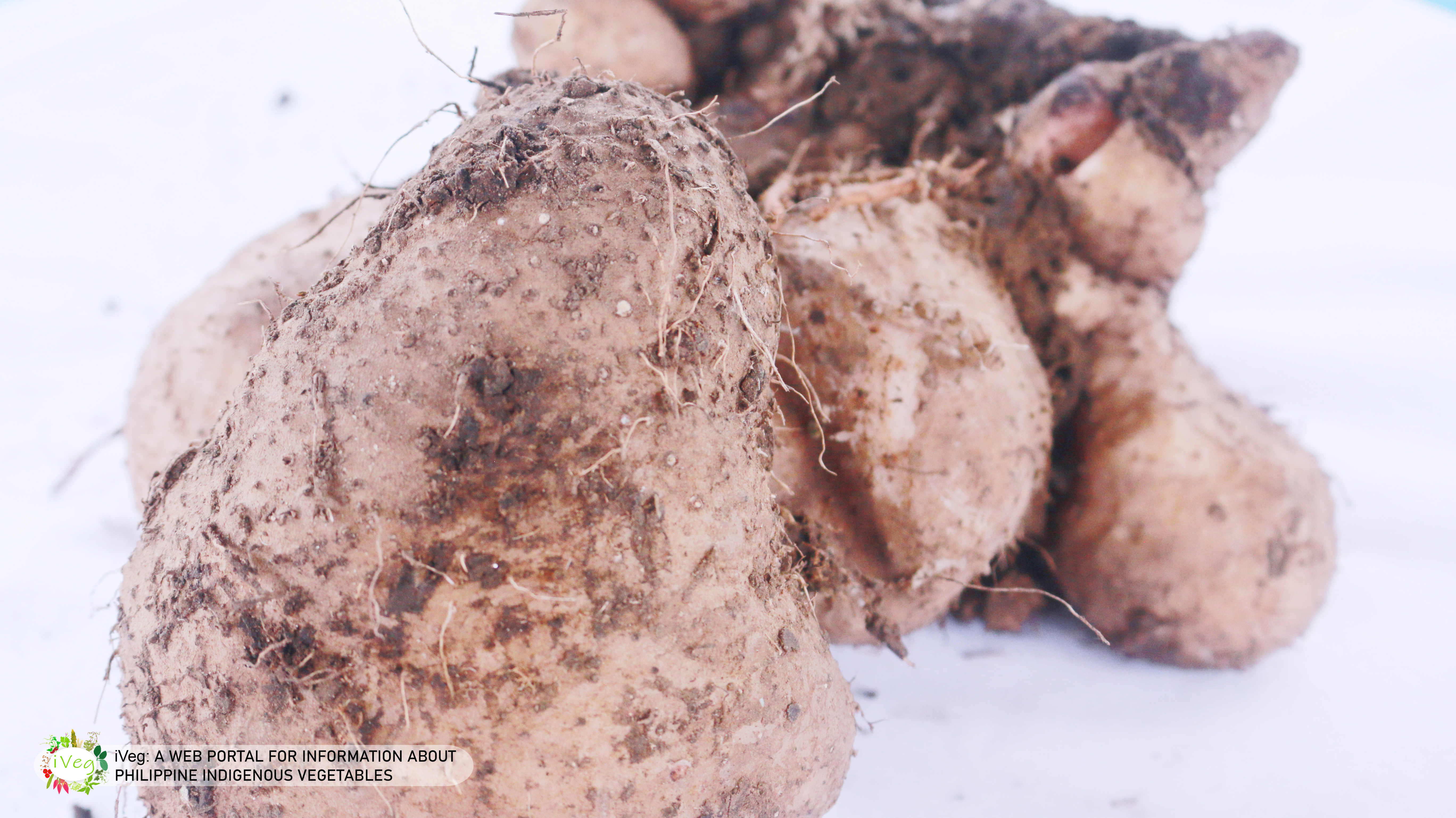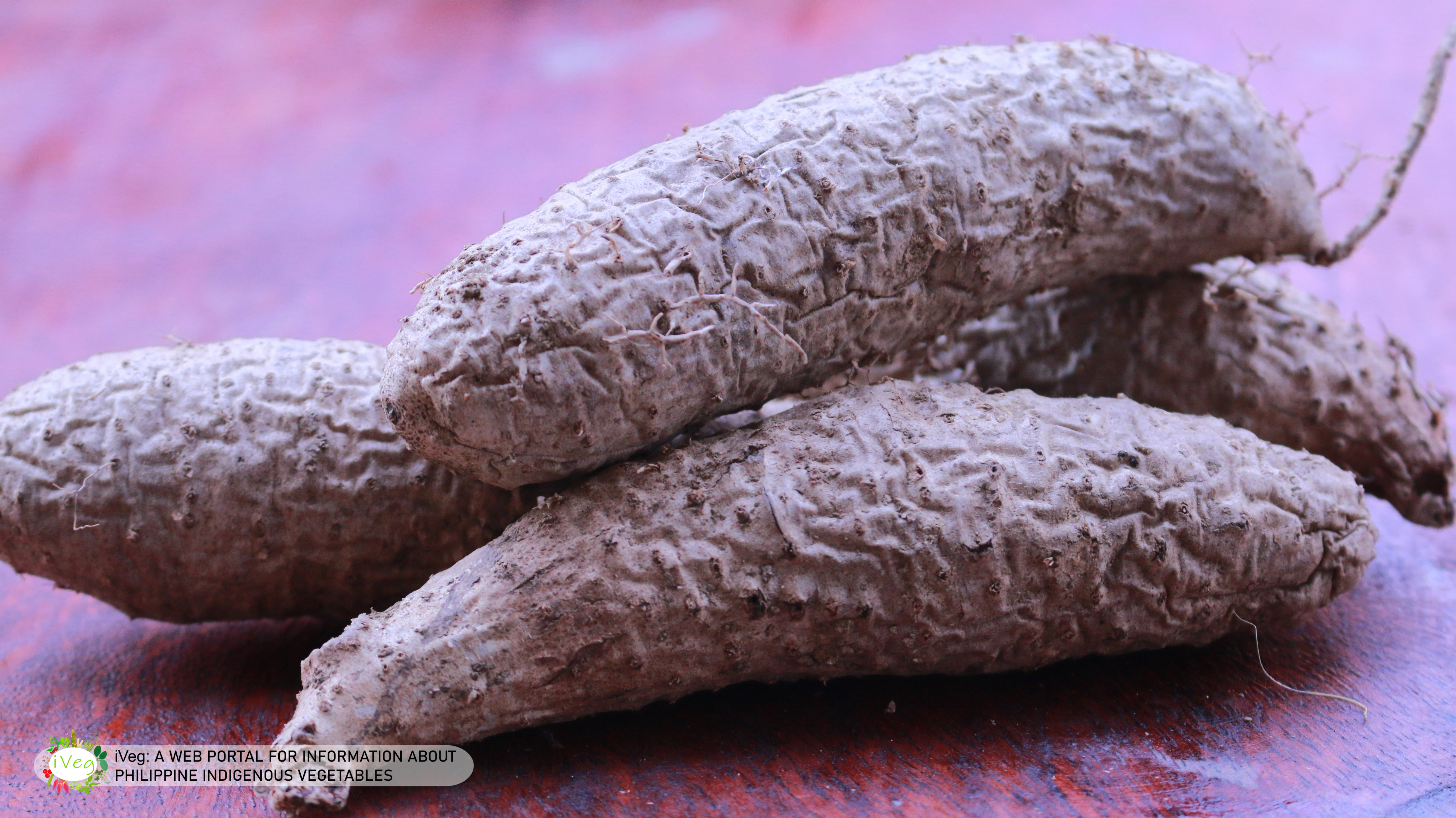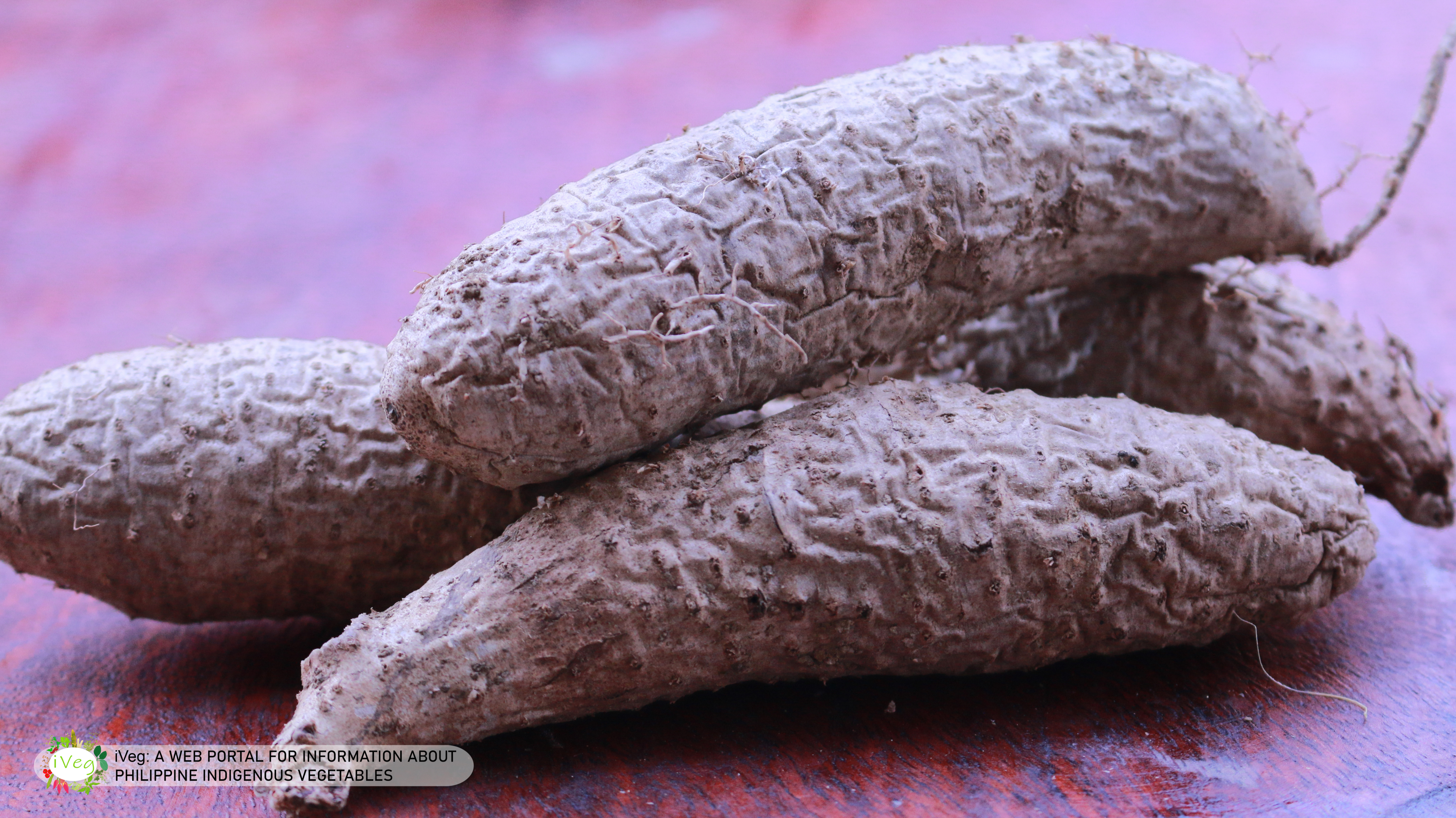Buga/Ilos/Tugui
Dioscorea esculenta (Lour.) Burkill
Family:
Dioscoreaceae
Synonyms:
Dioscorea esculenta var. Spinosa
Philippine local names:
Aneg (Ibn.), Boga (Ilk.), Dukai (Iv.), Kamiging (Bik.), Luttu (Ibn.), Toñgo (Tag.), Tugi (Tag., Ilk.), Tuñgo (Tag.)
English Name: Lesser yam
Botanical Description
Tugi is a slender, slightly hairy, spiny vine, reaching a height of several meters. Tubers are 15 to 20 centimeters long, except in the case of some cultivated forms. Leaves are simple, suborbicular to reniform, 6 to 12 centimeters long, apiculate, the base 11- to 15-nerved, prominently heart-shaped, with rounded lobes. Spikes are slender, axillary, pubescent, up to 50 centimeters long. Flowers are green, about 4 millimeters in diameter.
=http://www.stuartxchange.org/Tugi.html
=http://www.stuartxchange.org/Tugi.html
Conservation Status
Wild-crafted
Geographical Distribution
Distribution
- In thickets and secondary forests at low altitudes in Bataan Islands, in Cagayan, Benguet, La Union, Pangasinan in Luzon, and in Semirara.
- Also cultivated, but not as extensively as ubi (Dioscorea alata).
- Also occurs in China, India to Malaya and Polynesia.
=http://www.stuartxchange.org/Tugi.html
- In thickets and secondary forests at low altitudes in Bataan Islands, in Cagayan, Benguet, La Union, Pangasinan in Luzon, and in Semirara.
- Also cultivated, but not as extensively as ubi (Dioscorea alata).
- Also occurs in China, India to Malaya and Polynesia.
=http://www.stuartxchange.org/Tugi.html
Propagation
Seed - not normally used to propagate this species. Cuttings of tubers. Pieces of tuber, each weighing around 50 - 80g with dormant buds, are planted in situ 4 - 8cm deep with the stem pointing downwards[ 300 ]. The cut tuber is often first left in the sun for several hours to promote wound healing and reduce the risk of fungal infection
https://pfaf.org/user/Plant.aspx?LatinName=Dioscorea+esculenta
https://pfaf.org/user/Plant.aspx?LatinName=Dioscorea+esculenta
Marketing
There are approximately 600 species of yam (Ozo et al. 1984) but the species cultivated in the Philippines are Dioscorea alata or ubi and Dioscorea esculenta or tugui (BAS 2006). Annual production of ubi in the Philippines
is 26,464 metric tons for the period 2000-2005, while that for tugui is 2,702 metric tons (BAS 2006). However, consumption for the same period averaged only 5.0% for ube and 14.0% for tugui (BAS 2006).
=https://www.researchgate.net/publication/259461650_Philippine_Yam_Dioscorea_spp_Tubers_Phenolic_Content_and_Antioxidant_Capacity
is 26,464 metric tons for the period 2000-2005, while that for tugui is 2,702 metric tons (BAS 2006). However, consumption for the same period averaged only 5.0% for ube and 14.0% for tugui (BAS 2006).
=https://www.researchgate.net/publication/259461650_Philippine_Yam_Dioscorea_spp_Tubers_Phenolic_Content_and_Antioxidant_Capacity
Part utilized as vegetables
Root
Uses
Food/ Edibility/ Culinary
Edibility / Nutritional
- Tubers are boiled and eaten; cooked like potatoes.
- Rich in carbohydrates, a good source of vitamin B, with a nutritional value similar to ubi.
=http://www.stuartxchange.org/Tugi.htmlMedicinal
Anti-inflammatory / Phytochemicals, Antioxidant, Inulin.
=http://www.stuartxchange.org/Tugi.htmlSocio-cultural importance
- Traditionally uses suggest anti-inflammatory, anti-stress, anti-spasmodic properties.
- Studies have suggest antioxidant, antifertility, antibacterial, anti-inflammatory properties.
Correct Citation
Documentation of Indigenous Vegetables (2020) Retrieved from www.iveg.com.
See references:
http://www.stuartxchange.org/Tugi.htmlhttps://www.researchgate.net/publication/259461650_Philippine_Yam_Dioscorea_spp_Tubers_Phenolic_Content_and_Antioxidant_Capacity




